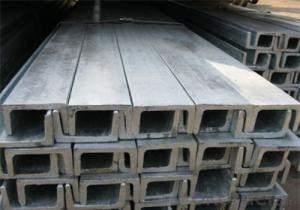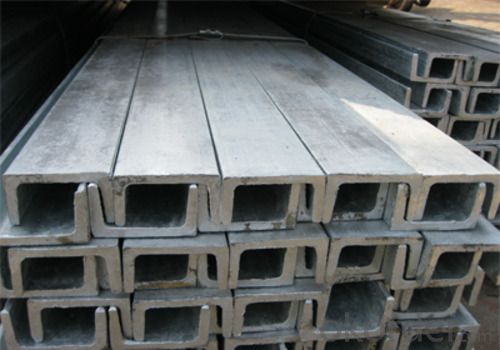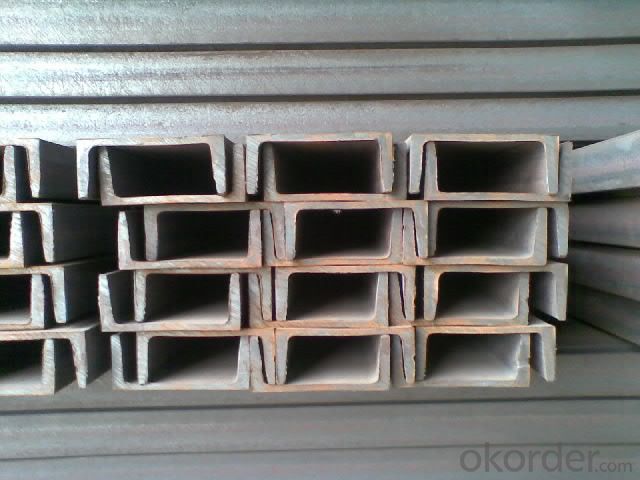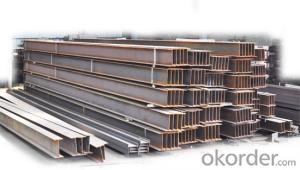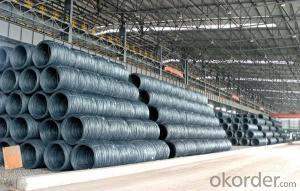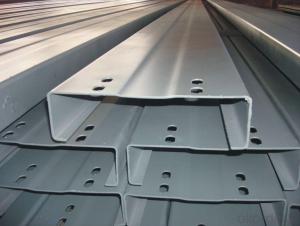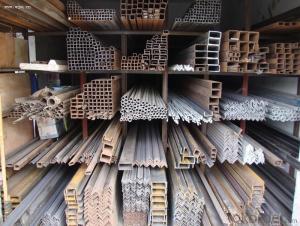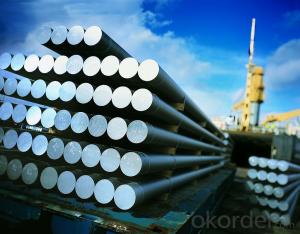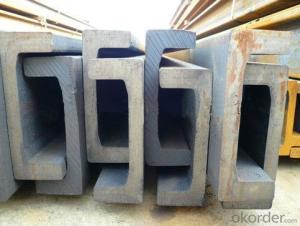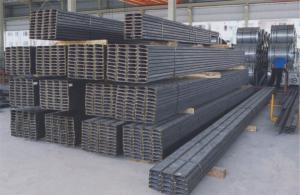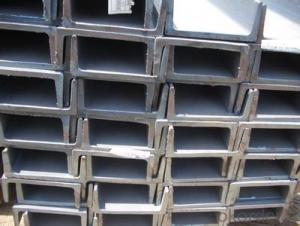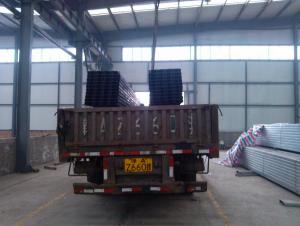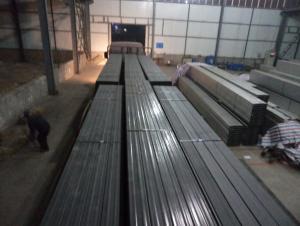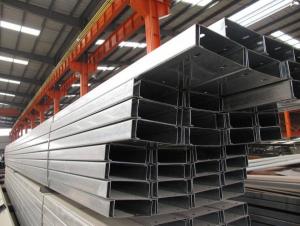JIS Standard Hot Rolled Channel Steel, carbon mild structural steel u channel
- Loading Port:
- Tianjin
- Payment Terms:
- TT OR LC
- Min Order Qty:
- 25 m.t.
- Supply Capability:
- 30000 m.t./month
OKorder Service Pledge
OKorder Financial Service
You Might Also Like
Steel Channel
1.Country of Origin: China
2.Commodity: Channel steel
3.Tolerance: Strictly according to the G/B and JIS standard
4.Delivery time: within 30 days
5.Price term: CIF/ CFR according to clients requirements
6.Payment terms: 100%Irrevercable L/C At Sight or TT
7. Length:6-12m
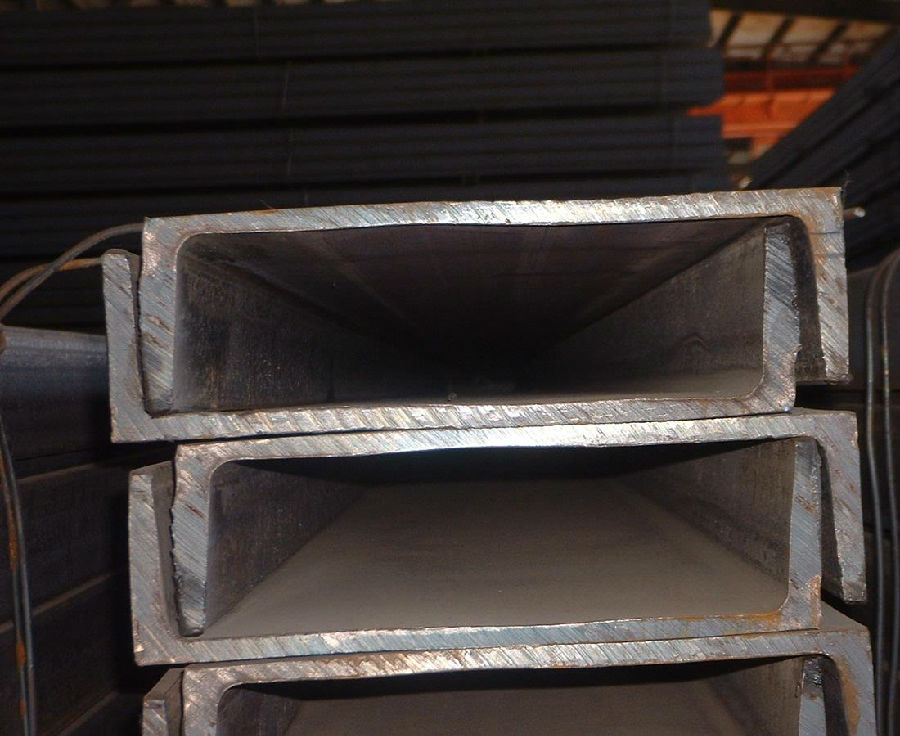
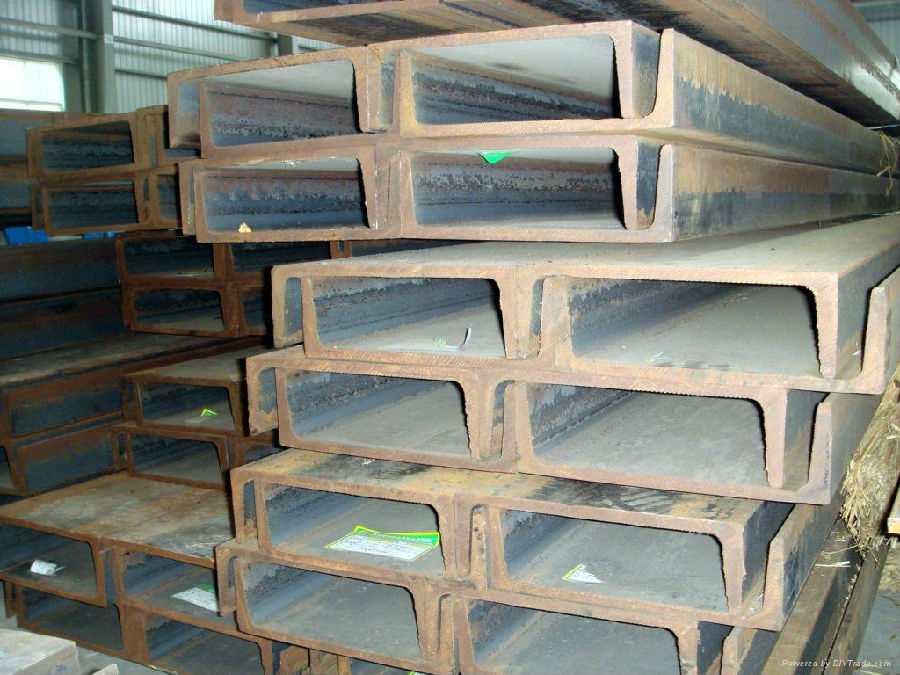
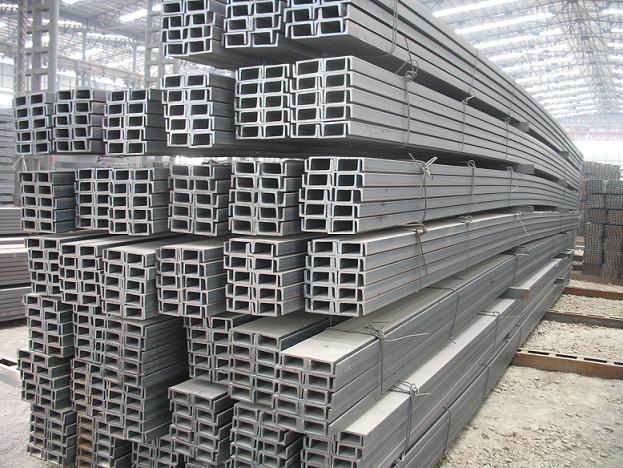
GB STANDARD STEEL CHANNEL BAR | ||||
SIZE | H(mm) | B(mm) | T(mm) | Kg/m |
5 | 50 | 37 | 4.5 | 5.438 |
6.3 | 63 | 40 | 4.8 | 6.634 |
8 | 80 | 43 | 5.0 | 8.045 |
10 | 100 | 48 | 5.3 | 10.007 |
12 | 120 | 53 | 5.5 | 12.059 |
14A | 140 | 58 | 6.0 | 14.535 |
14B | 140 | 60 | 8.0 | 16.733 |
16A | 160 | 63 | 6.5 | 17.240 |
16B | 160 | 65 | 8.5 | 19.752 |
18A | 180 | 68 | 7.0 | 20.174 |
18B | 180 | 70 | 9.0 | 23.000 |
20A | 200 | 73 | 7.0 | 22.637 |
20B | 200 | 75 | 9.0 | 25.777 |
22A | 220 | 77 | 7.0 | 24.999 |
22B | 220 | 79 | 9.0 | 28.453 |
25A | 250 | 78 | 7.0 | 27.410 |
25B | 250 | 80 | 9.0 | 31.335 |
28A | 280 | 82 | 7.5 | 31.427 |
28B | 280 | 84 | 9.5 | 35.823 |
30A | 300 | 85 | 7.5 | 34.463 |
30B | 300 | 87 | 9.5 | 39.173 |
32A | 320 | 88 | 8.0 | 38.083 |
32B | 320 | 90 | 10.0 | 43.107 |
36A | 360 | 96 | 8.0 | 47.814 |
36B | 360 | 98 | 110 | 53.166 |
40A | 400 | 100 | 10.5 | 58.928 |
40B | 400 | 102 | 12.5 | 65.208 |
JIS STANDARD CANNEL STEEL BAR | ||||
H(mm) | B(mm) | T1(mm) | T2(mm) | Kg/m |
75 | 40 | 3.8 | 7.0 | 5.30 |
75 | 40 | 4.0 | 7.0 | 5.60 |
75 | 40 | 4.5 | 7.0 | 5.85 |
75 | 40 | 5.0 | 7.0 | 6.92 |
76 | 38 | 5.1 | 6.8 | 6.70 |
100 | 50 | 3.8 | 6.0 | 7.30 |
100 | 50 | 4.2 | 6.0 | 8.03 |
100 | 50 | 4.5 | 7.5 | 8.97 |
100 | 50 | 5.0 | 7.5 | 9.36 |
102 | 51 | 6.1 | 7.6 | 10.42 |
125 | 65 | 5.2 | 6.8 | 11.66 |
125 | 65 | 5.3 | 6.8 | 12.17 |
125 | 65 | 5.5 | 8.0 | 12.91 |
125 | 65 | 6.0 | 8.0 | 13.40 |
127 | 64 | 6.4 | 9.2 | 14.9 |
150 | 75 | 5.5 | 7.3 | 14.66 |
150 | 75 | 5.7 | 10.0 | 16.71 |
150 | 75 | 6.5 | 10.0 | 18.60 |
150 | 75 | 9.0 | 12.5 | 24.00 |
152 | 76 | 6.4 | 9.0 | 17.90 |
- Q: Can steel channels be used for ceiling installations?
- Yes, steel channels can be used for ceiling installations. Steel channels are commonly used in construction for their strength and durability. They provide a secure and stable base for suspending or mounting various components of a ceiling system, such as electrical fixtures, HVAC ducts, and acoustic panels. Steel channels also allow for easy installation and adjustment, making them a popular choice for both residential and commercial ceiling applications. Additionally, they offer excellent load-bearing capacity, ensuring that the ceiling structure remains stable and secure.
- Q: Can steel channels be used in the agricultural manufacturing industry?
- Yes, steel channels can be used in the agricultural manufacturing industry. Steel channels are versatile and durable, making them suitable for various applications in agriculture, such as constructing farm equipment, machinery, and structures like barns and sheds.
- Q: How do steel channels contribute to the overall structural integrity of a building?
- Steel channels contribute to the overall structural integrity of a building by providing strength, support, and stability. These channels are often used as beams or columns in construction, allowing them to bear heavy loads and distribute weight evenly throughout the structure. The robustness of steel channels helps to resist bending, buckling, and other forms of deformation, ensuring that the building can withstand various external forces such as wind, seismic activity, and the weight of the structure itself. Additionally, steel channels are highly durable and fire-resistant, further enhancing the safety and longevity of the building.
- Q: Standard for channel 20
- According to the GB / T 707 - 1998 hot-rolled steel GB, No. 20 channel is divided into: 20A; 20b two.20A: height: 200 mm width: 73 mm thickness: 7 mm weight: 22.637 kg / m theory.20b: height: 200 mm width: 75 mm thickness: 9 mm weight: 25.777 kg / m theory.(Note: the theoretical weight calculation of steel hot-rolled steel according to the density of 7.85 g / cm3)
- Q: Are steel channels suitable for seismic zones?
- Yes, steel channels are suitable for seismic zones. Steel is a strong and ductile material that can effectively resist seismic forces. Steel channels are commonly used in seismic design and construction due to their ability to provide structural stability and resilience during earthquakes. They offer excellent strength-to-weight ratio, flexibility, and resistance to bending and shearing forces, making them a reliable choice for seismic zone applications.
- Q: Can steel channels be used for modular construction systems?
- Yes, steel channels can be used for modular construction systems. Steel channels are versatile and can be easily fabricated to create modular components such as beams, columns, and support structures. They provide excellent strength and durability, making them suitable for supporting heavy loads in modular construction. Steel channels can be easily connected and integrated into modular systems, providing a flexible and efficient construction solution. Additionally, the use of steel channels allows for easy customization and adaptability to different project requirements and designs.
- Q: Can steel channels be used for material handling systems?
- Yes, steel channels can be used for material handling systems. Steel channels are commonly used in industrial applications due to their strength, durability, and versatility. They can be used to create support structures, frames, and beams for material handling systems such as conveyor belts, overhead cranes, and storage racks. Steel channels provide excellent load-bearing capabilities and can withstand heavy loads and impacts, making them suitable for handling and transporting various materials in industrial settings. Additionally, steel channels can be easily fabricated, modified, and installed, allowing for customized material handling solutions to be created based on specific requirements.
- Q: Are steel channels suitable for gymnasium structures?
- Yes, steel channels are suitable for gymnasium structures. Steel channels are commonly used in construction due to their durability, strength, and versatility. They are ideal for gymnasium structures as they can support heavy loads and provide stability. Additionally, steel channels can be easily fabricated and installed, making them a cost-effective choice for gymnasium construction. Moreover, steel channels have excellent resistance to fire, corrosion, and pests, ensuring the longevity of the gymnasium structure. Overall, steel channels are a reliable and practical option for constructing gymnasiums.
- Q: How are steel channels installed in construction projects?
- Steel channels are typically installed in construction projects by first determining the precise location and orientation required. Then, the channels are positioned and anchored securely using bolts, welds, or other fastening methods. This ensures stability and structural integrity, allowing the channels to support loads and provide necessary reinforcement.
- Q: Installation of floor type distribution box, foundation channel production and installation, the quota should choose which two?
- Floor type distribution box installation cannot apply the distribution cabinet installation, and should set floor type of distribution box installation quota; installation set foundation channel steel foundation channel steel installation item.The foundation channel steel production: the foundation channel steel is not installed item containing material, quantity of steel plate, galvanized flat steel, round steel is installed base grounding of the auxiliary channel and. To calculate the foundation channel steel production, making composite iron production, the quantity of round bar, angle steel, flat steel can be unified to channel.
Send your message to us
JIS Standard Hot Rolled Channel Steel, carbon mild structural steel u channel
- Loading Port:
- Tianjin
- Payment Terms:
- TT OR LC
- Min Order Qty:
- 25 m.t.
- Supply Capability:
- 30000 m.t./month
OKorder Service Pledge
OKorder Financial Service
Similar products
Hot products
Hot Searches
Related keywords
